Bengal alpona, "Meeting with Kolkata" — part 2
Then on to Kumartuli, another mythical place in Kolkata. It is here that potters and sculptors make idols of the goddess Durga, which, once painted and dressed, are carried in procession before disappearing into the river.
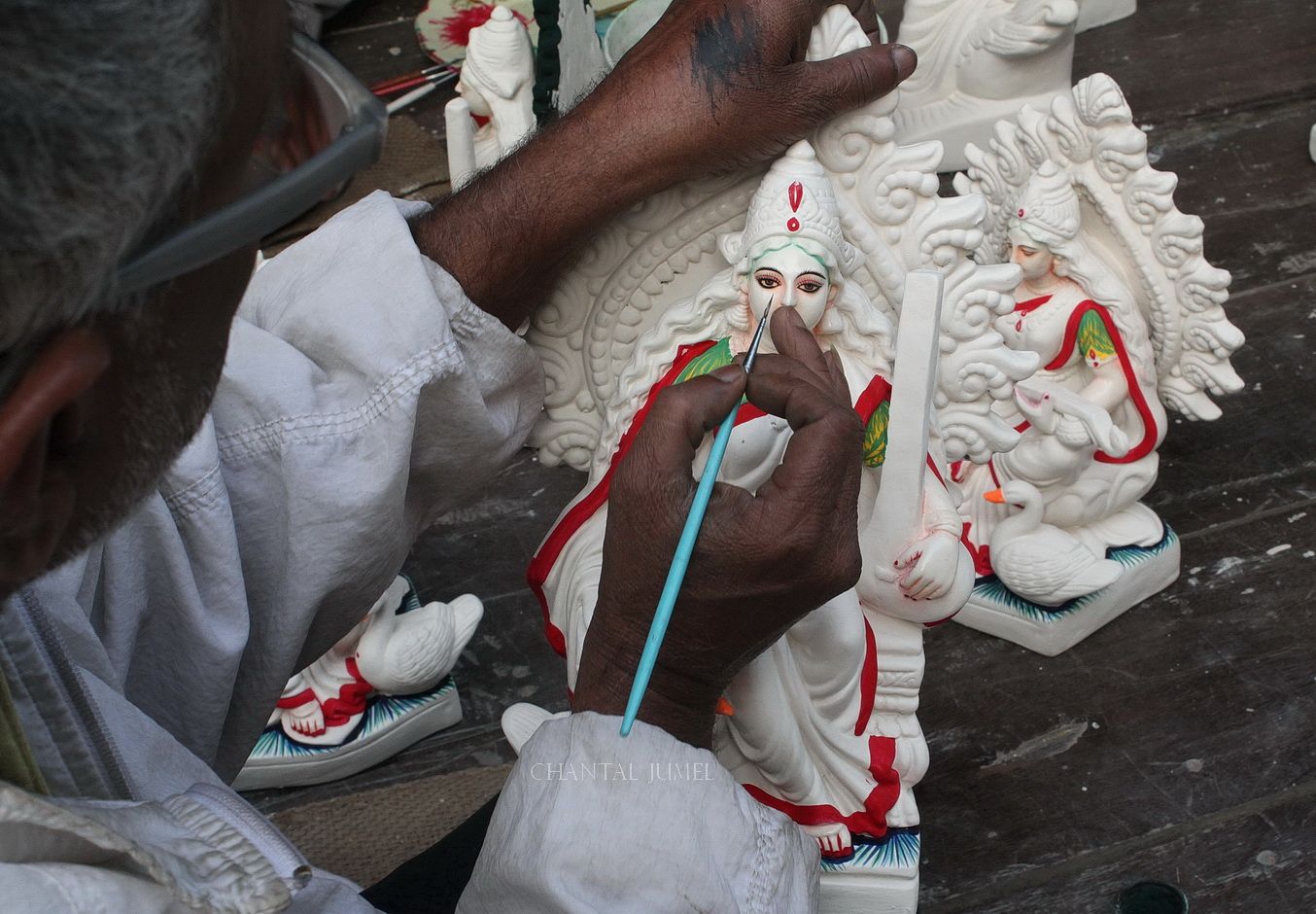
As I left the airport, a car was waiting for me, sent by my hostess and guide for the next few days. She has organised my trip to the north of Kolkata and a meeting with a young artist who is passionate about alpona. He will take me to his grandmother’s house and a few neighbouring villages for the agricultural festival of Makar Sankranti, known here as Poush Sankranti. It is one of the few festivals fixed by the solar calendar and inaugurating a period of abundance. In the meantime, I have been following invitations and scheduled visits; a real digest of the cultural life of the city that has always prided itself on being the intellectual capital of India. First there is an exhibition at the Academy of Fine Arts, followed the next day by a lecture by journalist Mark Tully at the British Tollygunge Club, which hosts part of the annual literature festival. Then a visit to the imposing ancestral home of the poet Rabindranath Thakur, known as Tagore; an exceptional being whose reputation crossed the borders as much by his writings as by his extraordinary humanism. He befriended Romain Rolland and in 1919, together with other eminent intellectuals, they signed "Declaration of the Independence of the Mind” (Original French title: Déclaration d’Indépendance de l’Esprit) to protest against the brutality of Nazi Germany and the divisions among thinkers of the time.
For my last day, I chose two mythical places. First, a stroll through the book district on College Street, which is teeming with bookstores, a bit like those along the Seine in Paris. Here, onlookers and students bargain for books and then rush into one of the city's oldest cafés, the Indian Coffee House, the holy of holies for the local intelligentsia.


There, sipping chai, students, far-left revolutionaries, lovers and artists in Basque berets gather in the huge square room to reinvent the world under a giant portrait of the poet Tagore. The atmosphere here reminds me of the bohemian cafes of the seventies and is a world away from the trendy cafes and young women in stilettos on Park Street.

Then on to Kumartuli, another mythical place in Kolkata. It is here that potters and sculptors make idols of Goddesses, which, once painted and dressed, are carried in procession before disappearing into the river. For several days, families can admire them in makeshift shrines built for the occasion. An idol is made in several stages and each artist in the district is specialised in a particular phase. After the creation of a bamboo skeleton, the frame will be covered with a mixture of straw and clay that is shaped into the desired form.
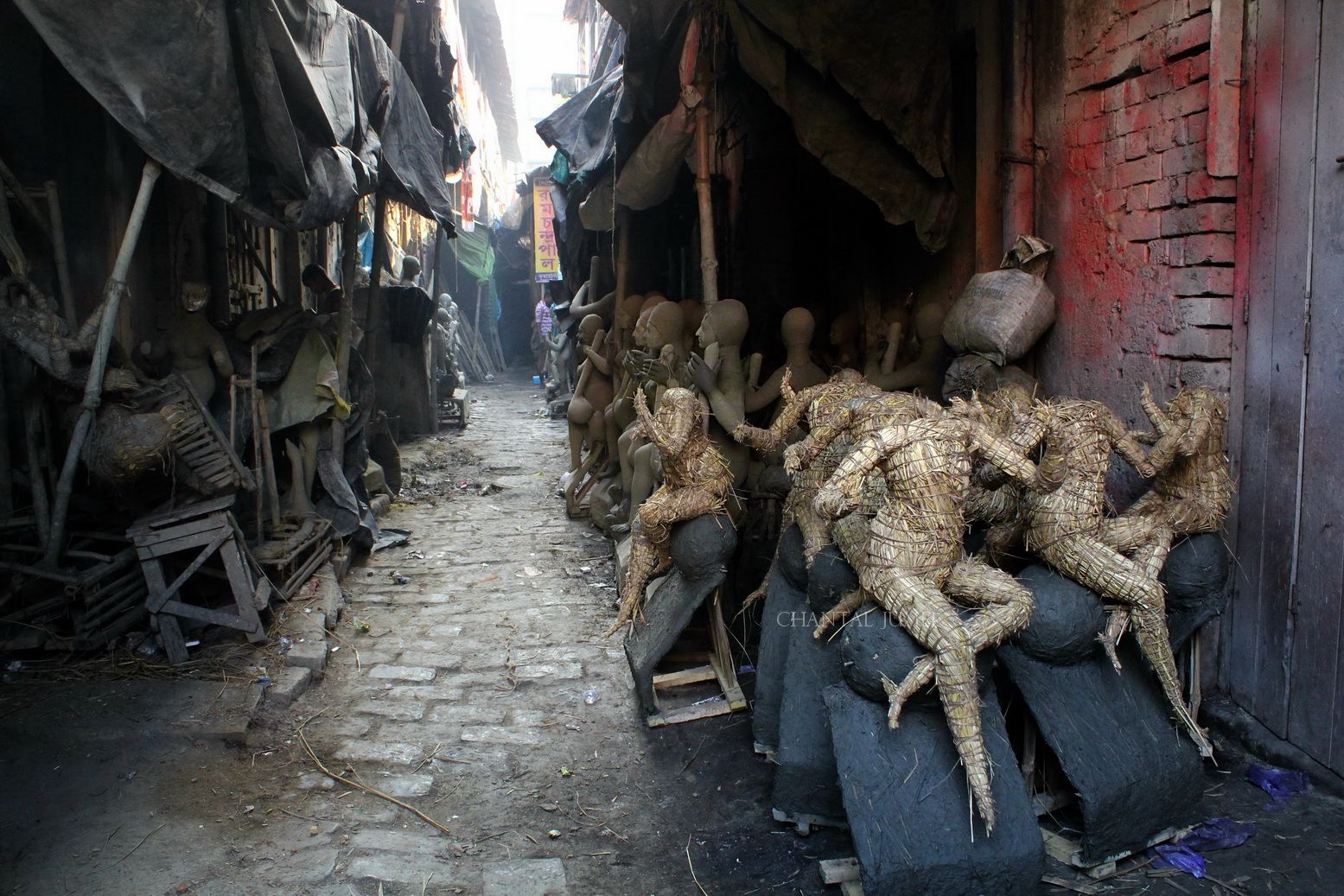
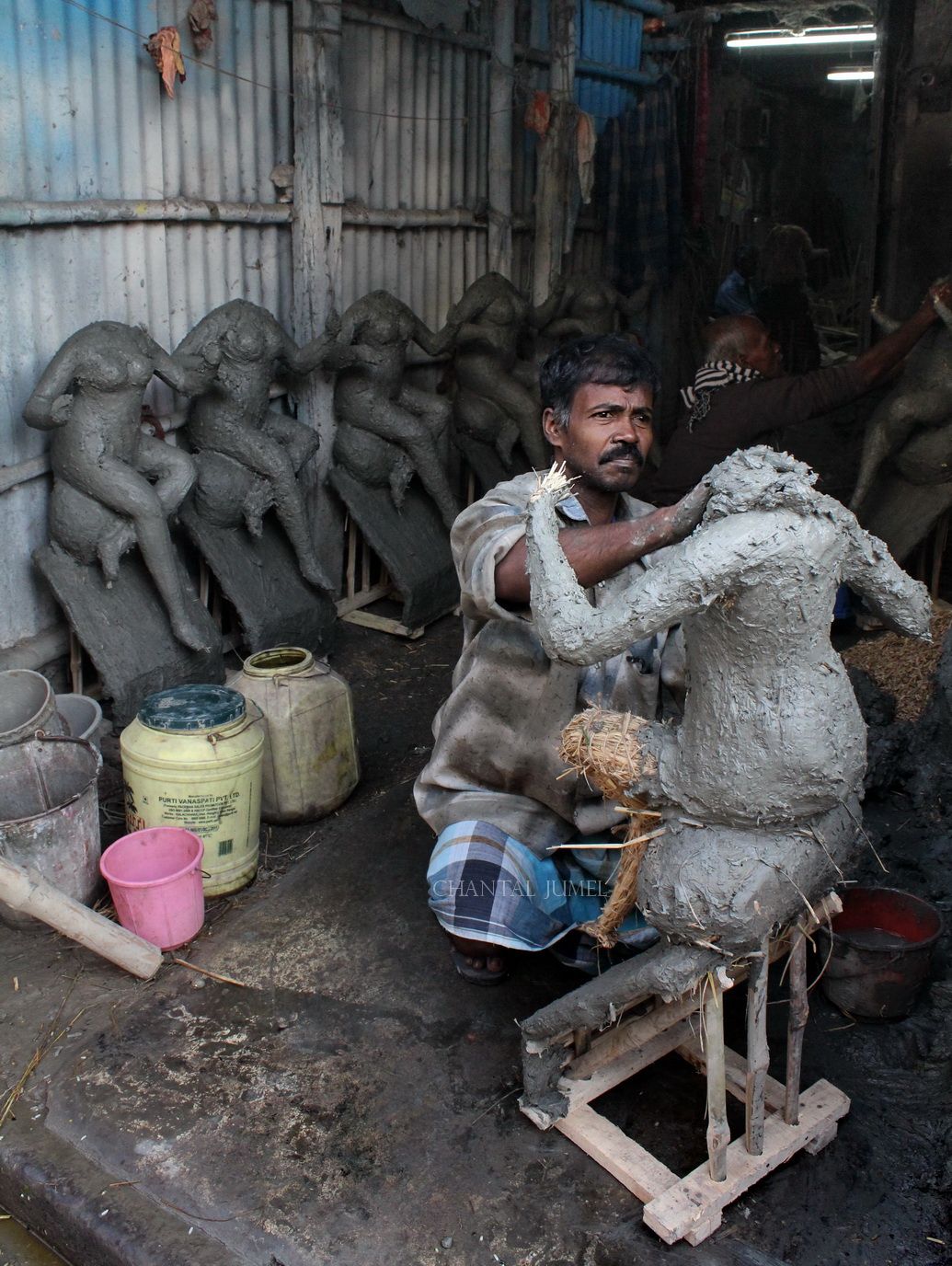

In another workshop, potters prepare the limbs, the bust and the head, and elsewhere again the ornaments of the crown and the various jewels. The idol is then painted and dressed with great care; the last step, called chokhhu daan in Bengali, consists of painting the eyes and more particularly the pupil.
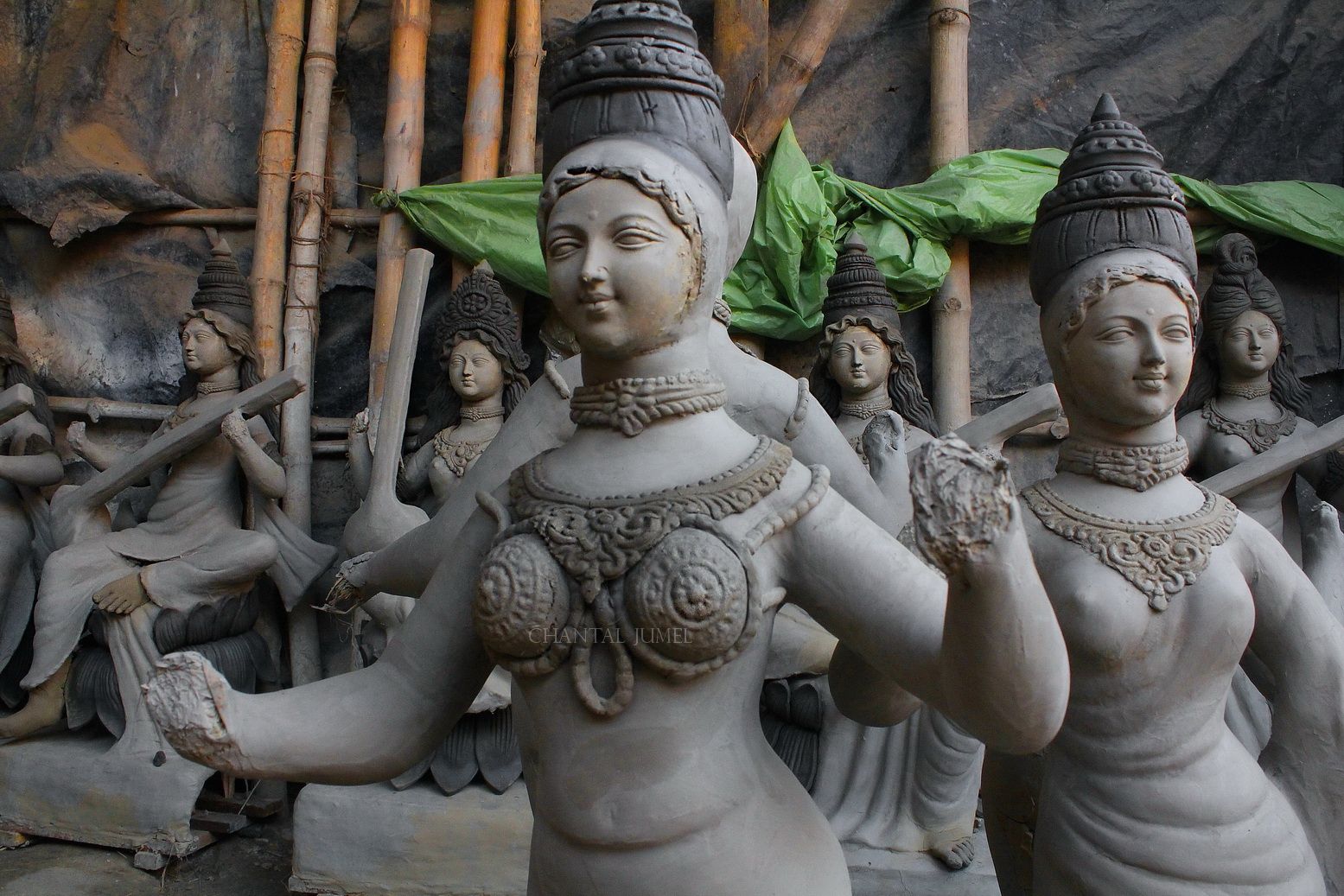
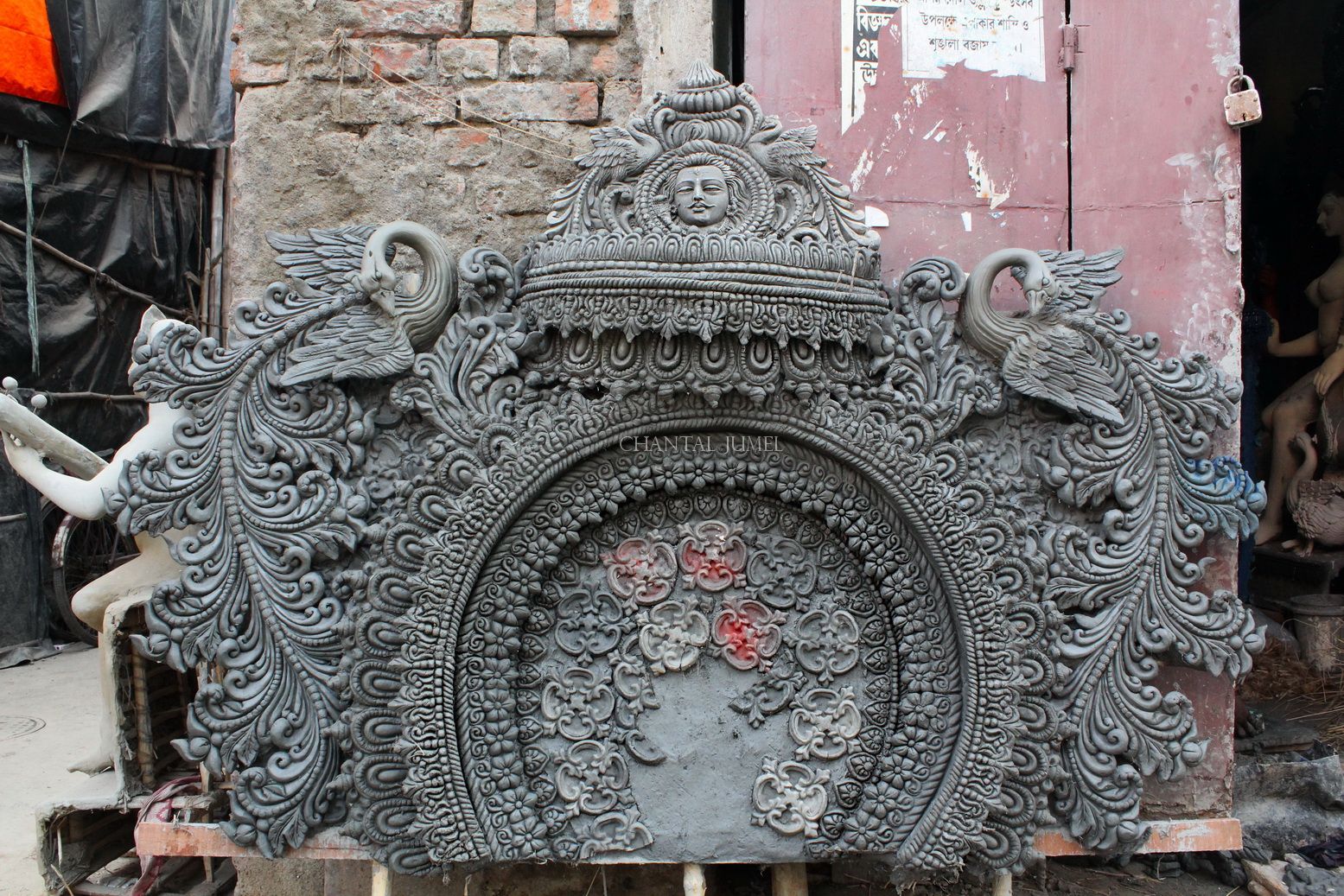
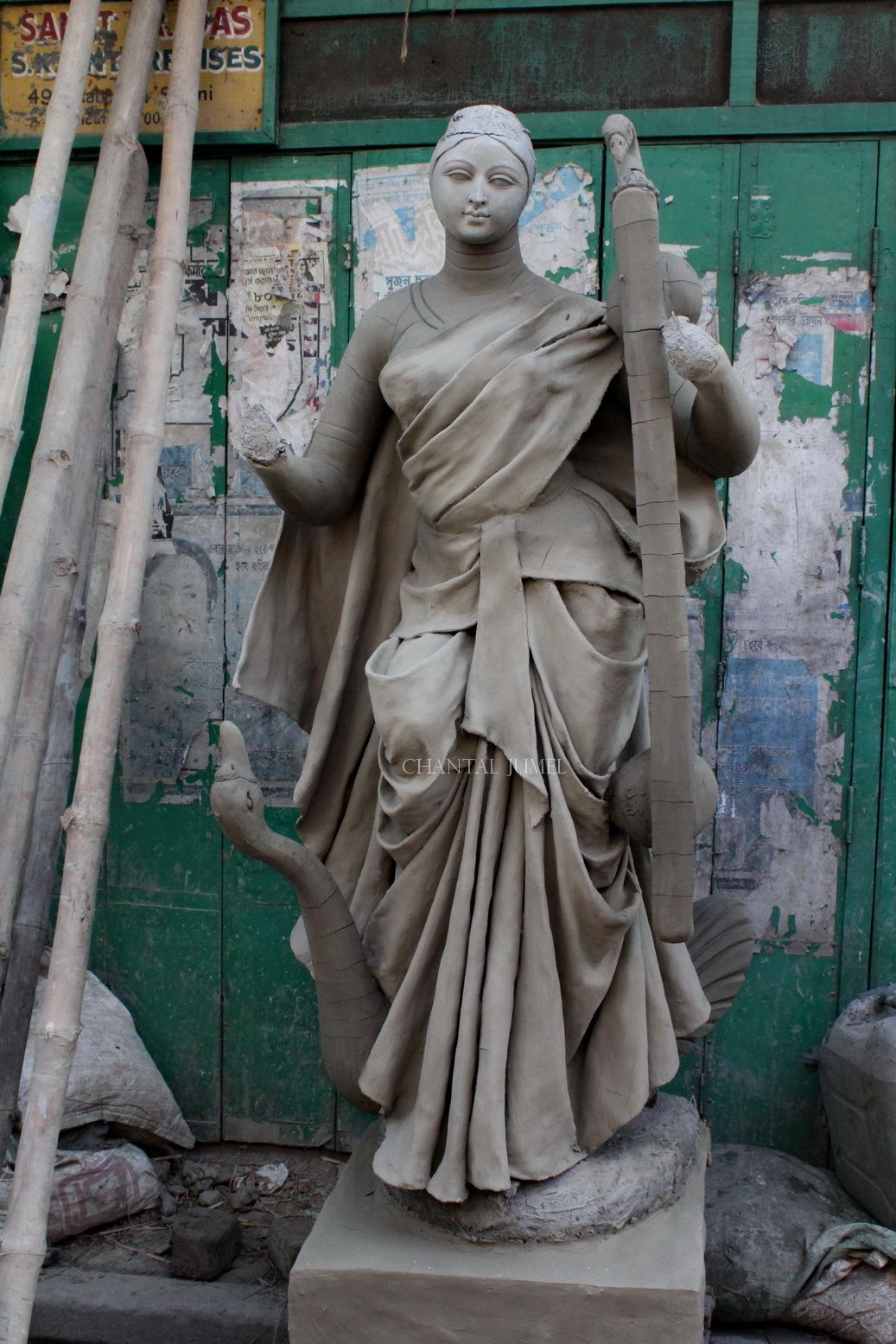
Previous articles:
Bengal alpona, "The River by Jean Renoir"— part 1
